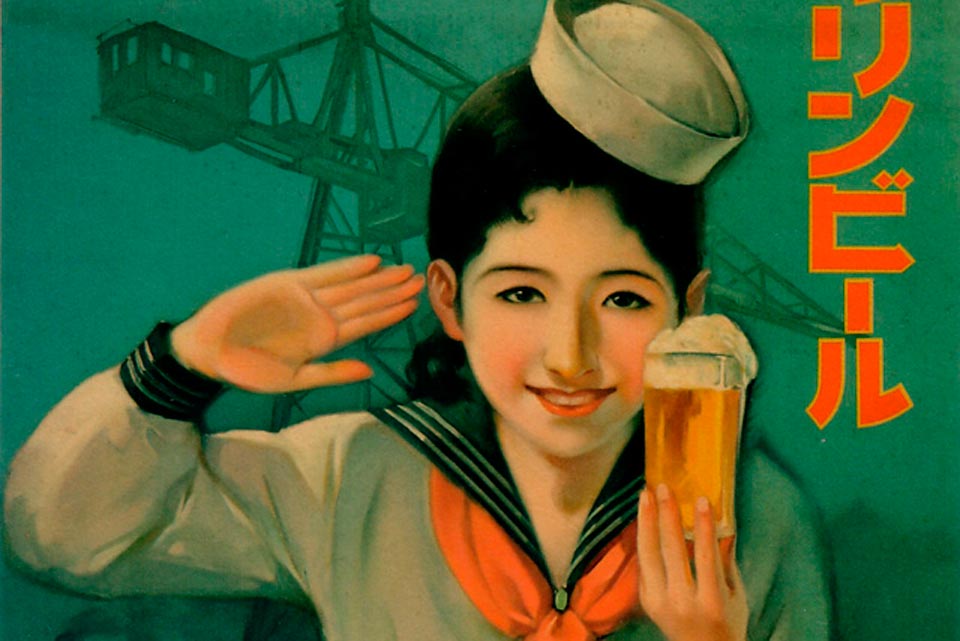
What it Looked Like in the Past: Japanese Cigarette and Alcohol Advertising in 1894–1954
The development of Japanese advertising started in Meiji period (1868—1913), when Japan broke its isolation from the rest of the world and started a large scale industrialisation and modernisation. Japanese mentality was changing too – it acquired some Western features, and at a certain point was on the threshold between the Tradition and the Novelty.
By the beginning of the 1890s excessive enchantment with the West was replaced by a wave of nationalism, especially after Japan’s victories in wars with China (1894–1895) and Russia (1904–1905). At the same time the country witnessed a skyrocketing development of the tobacco industry and, accordingly, cigarette commercials.
{“img”: “/wp-content/uploads/2015/04/drink_smoke_16.jpg”, “alt”: “Japanese Ads”, “text”: “Hero cigarettes, 1894.”}
{“img”: “/wp-content/uploads/2015/04/drink_smoke_17.jpg”, “alt”: “Japanese Ads”, “text”: “Tokio beer, 1896-1906.”}
{“img”: “/wp-content/uploads/2015/04/drink_smoke_07.jpg”, “alt”: “Japanese Ads”, “text”: “Chūyū cigarettes, 1900.”}
{“img”: “/wp-content/uploads/2015/04/drink_smoke_06.jpg”, “alt”: “Japanese Ads”, “text”: “Peacock cigarettes, 1902.”}
Until the end of WW2 Japanese advertising had a number of distinctive features. In the first place, it borrowed the style of traditional Japanese etchings. No “Westernisation” could make artists change the style of their drawings — they did it the same way as their ancestors. Traditional graphics looked particularly nice in imported goods commercials — especially cigarette and alcohol ones. Secondly, its imagery was heavily militarised. Pictures of soldiers on cigarette packs and girls holding weapons accentuated Japan’s predominant military moods. And the last feature was orientation towards Western trends. Without it there wouldn’t be any latinised logos and advertising slogans, nor drawings imitating Art Nouveau artist Alphonse Mucha.
{“img”: “/wp-content/uploads/2015/04/drink_smoke_20.jpg”, “alt”: “Japanese Ads”, “text”: “Kabuto beer, 1911.”}
{“img”: “/wp-content/uploads/2015/04/drink_smoke_15.jpg”, “alt”: “Japanese Ads”, “text”: “Dai Nippon brewery, 1912.”}
{“img”: “/wp-content/uploads/2015/04/drink_smoke_08.jpg”, “alt”: “Japanese Ads”, “text”: “Kembang (export variety of Sakura beer), 1912–1916.”}
{“img”: “/wp-content/uploads/2015/04/drink_smoke_01.jpg”, “alt”: “Japanese Ads”, “text”: “Sakura beer, 1924.”}
{“img”: “/wp-content/uploads/2015/04/drink_smoke_05.jpg”, “alt”: “Japanese Ads”, “text”: “Umegatani sake, 1926.”}
{“img”: “/wp-content/uploads/2015/04/drink_smoke_11.jpg”, “alt”: “Japanese Ads”, “text”: “Sakura beer, 1928–1932.”}
{“img”: “/wp-content/uploads/2015/04/drink_smoke_09.jpg”, “alt”: “Japanese Ads”, “text”: “Cascade beer, 1929.”}
Over time the military component in advertising became more and more pronounced. There were soldiers drinking and in the posters — and they were ready to defend their motherland. It is difficult to tell a commercial poster from an a propagandist one — details were abandoned for a plain style of drawing, objects were depicted in an abstract way, a bright and simplistic palette was used.
{“img”: “/wp-content/uploads/2015/04/drink_smoke_19.jpg”, “alt”: “Japanese Ads”, “text”: “Yebisu beer, 1930.”}
{“img”: “/wp-content/uploads/2015/04/drink_smoke_18.jpg”, “alt”: “Japanese Ads”, “text”: “Minori cigarettes, 1930.”}
{“img”: “/wp-content/uploads/2015/04/drink_smoke_13.jpg”, “alt”: “Japanese Ads”, “text”: “Hibiki cigarettes. Tobacco Profits for National Defense Week, 1930.”}
{“img”: “/wp-content/uploads/2015/04/drink_smoke_21.jpg”, “alt”: “Japanese Ads”, “text”: “Urara cigarettes, 1932.”}
{“img”: “/wp-content/uploads/2015/04/drink_smoke_12.jpg”, “alt”: “Japanese Ads”, “text”: “Zuigan sake, 1934.”}
{“img”: “/wp-content/uploads/2015/04/drink_smoke_10.jpg”, “alt”: “Japanese Ads”, “text”: “Takara shōchū, 1935–1938.”}
{“img”: “/wp-content/uploads/2015/04/drink_smoke_02.jpg”, “alt”: “Japanese Ads”, “text”: “Gekkeikan sake, 1935–1938.”}
{“img”: “/wp-content/uploads/2015/04/drink_smoke_23.jpg”, “alt”: “Japanese Ads”, “text”: “Defense for country, tobacco for society (South Kyoto Tobacco Sellers’ Union).”}
{“img”: “/wp-content/uploads/2015/04/drink_smoke_04.jpg”, “alt”: “Japanese Ads”, “text”: “Sakura beer, 1938.”}
{“img”: “/wp-content/uploads/2015/04/drink_smoke_03.jpg”, “alt”: “Japanese Ads”, “text”: “Kirin beer, 1939.”}
In the years following the after-war occupation Japanese commercials were trying to imitate American ones. For example, if in the past a smoking woman symbolised something indecent in Japanese culture, now a female image was becoming increasingly common in cigarette advertising. At a certain point total dependence on the West sped up awakening of national consciousness of the Japanese and they were once more ready to fight for a dignified place for their country in the world. They managed to win industrial leadership, but not the advertising one — alcohol and cigarettes were now sold only the European way.
{“img”: “/wp-content/uploads/2015/04/drink_smoke_22.jpg”, “alt”: “Japanese Ads”, “text”: “Anti-black market poster (violators face 3 years in prison, 50,000 yen fine), 1948.”}
{“img”: “/wp-content/uploads/2015/04/drink_smoke_14.jpg”, “alt”: “Japanese Ads”, “text”: “Message from Japan Monopoly Corporation, 1954.”}
New and best




